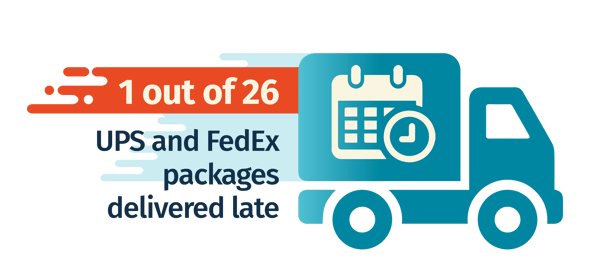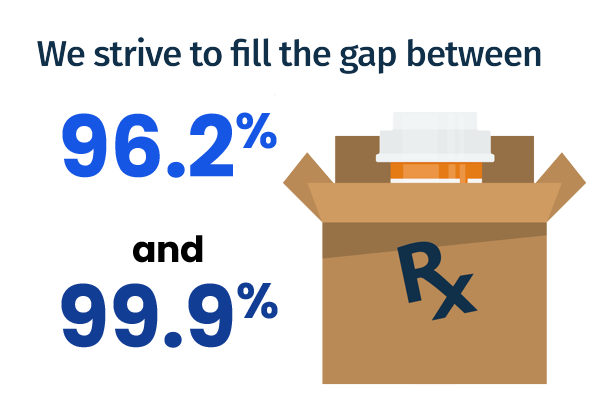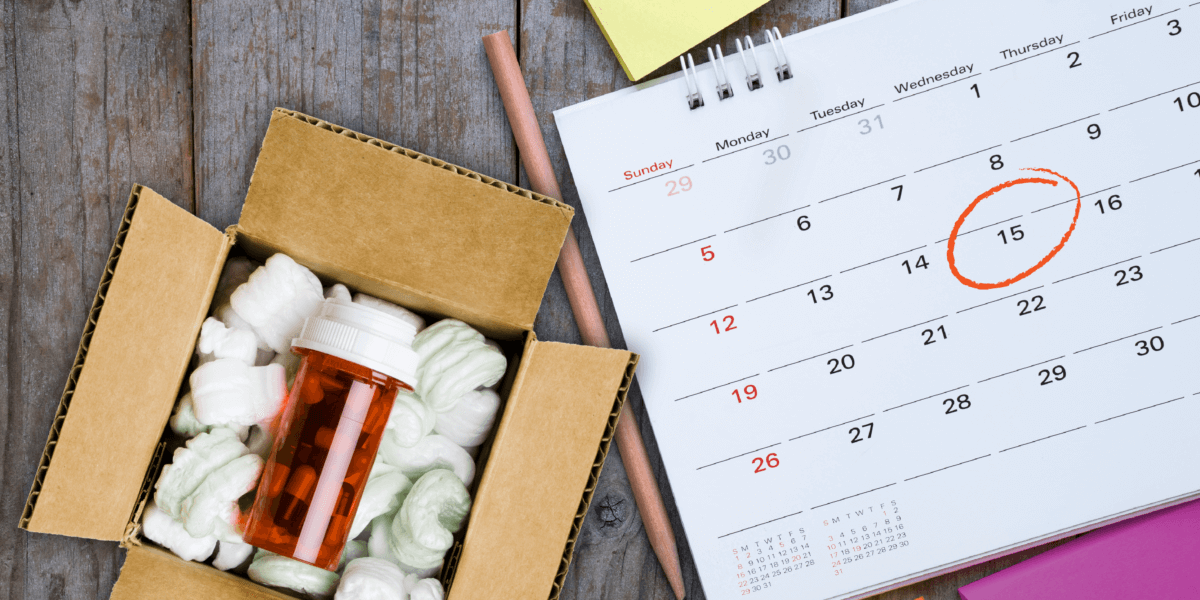When it comes to specialty therapy, it’s vital for patients to receive their treatments reliably and consistently on-time. It could be the difference between a patient spending the weekend with family or being in the emergency room. There are a number of factors at play when it comes to determining whether medication shipments arrive punctually, and one of the major players in this formula is the delivery process.
Based on collective UPS and FedEx statistics, 98.5 percent of specialty pharmacy packages are delivered on-time. On the surface, this sounds like a solid rate and many pharmacists are satisfied with this delivery rate.
But when we dig a bit deeper, we find that one out of every 26 UPS and FedEx packages are actually delivered late — that drops the near 99 percent on-time rate down to that more troubling 96.2 percent. Weather delays are a huge culprit of causing distressed shipments and driving down these on-time rates. In fact, approximately 41 percent of these distressed packages are related to weather. While the difference may not seem significant, virtually any specialty pharmacy and medical expert you speak to will agree that one out of 26 is simply unacceptable when it comes to patients receiving potentially life-saving therapy deliveries.

So, where’s the disconnect? How are these numbers being calculated, and how can we know for sure that we can depend on these crucial deliveries being fulfilled from end-to-end?
How Carriers Calculate Their Delivery Performance
The fundamental difference lies in the way that these percentages are calculated on both sides of the coin. It’s simultaneously correct for a carrier to claim 99 percent for on-time deliveries, while still saying that four to five percent of packages are late.
For example, a carrier will still count a package as “on-time” if the delivery employee showed up at the consignee’s home as scheduled, even if the consignee wasn’t home to receive the package. Both sides are technically correct here: the carrier did follow through with its delivery promise, but the patient still doesn’t have their medication in-hand. So, the patient either gets a delayed start or an interruption to their therapy, both of which can seriously impact adherence, treatment goals, and the patient’s quality of life.
It’s fair and understandable for a carrier to not count a delivery as “late” when the delay was caused by circumstances that were beyond its control. However, this doesn’t solve the problem — or remedy the potentially serious consequences — for a patient who hasn’t received their medication therapy.
How ParcelShield Does the Math — And Drives More Effective On-time Delivery of Patient Therapies
Our parcel delivery formula strictly follows through to the patient’s receipt of their delivery, regardless of the circumstances at play that prevented the hand-off from occurring. We strive to fill the gap between the 96.2 percent and the 99.9 percent on-time delivery rate that’s expected to help ensure no specialty therapy patient is left behind. And, we can help your specialty pharmacy proactively avoid distressed packages due to weather and other delays.

ParcelShield’s parcel management platform was meticulously designed for efficiency, scalability, and predictability using:
- Machine learning
- NOAA weather alerts
- Historical weather data
- Real-time parcel carrier performance data
Our intelligent parcel management and rescue logistics services safeguard the wellbeing of specialty therapy patients and the pharmacies who care for them.
We take the guesswork and uncertainty out of this critical part of the treatment process, so patients and their caregivers can focus on what really matters: having the tools — and medications necessary to achieve their therapy goals without interruption.
Avoid preventable shipping distress and easily access shipping insights that are often time-consuming, cumbersome, and difficult to collect— far beyond what’s provided by carriers.
To see how ParcelShield works and how it can benefit your specialty pharmacy, contact us for a demo. To get weather-related shipping insights right now, subscribe to receive our free Daily Parcel Deliverability Prediction Alerts in your inbox.


